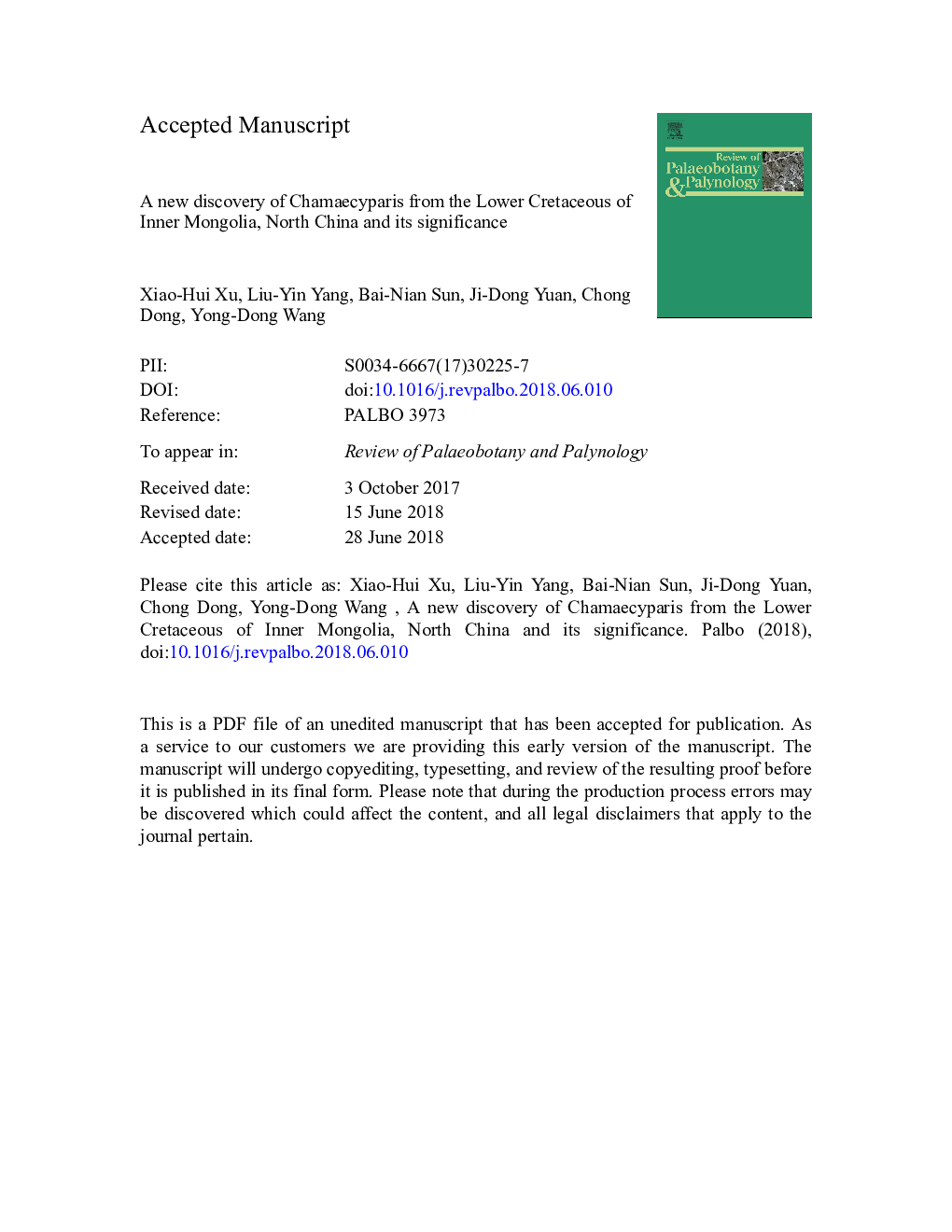| Article ID | Journal | Published Year | Pages | File Type |
|---|---|---|---|---|
| 8916591 | Review of Palaeobotany and Palynology | 2018 | 43 Pages |
Abstract
The fossil remains of Chamaecyparis Spach (Cupressaceae) were discovered in the Lower Cretaceous Guyang Formation of the Guyang Basin, Inner Mongolia, North China. The Guyang fossils are known from compressions-impressions of a foliated branch with an attached seed cone, a foliated vegetative branch fragment, an isolated seed cone and seeds. This is the first reliable fossil record of Chamaecyparis in China and is also the earliest member of Chamaecyparis currently known. The present fossils have been compared with living and some fossil Chamaecyparis species and they differ from them all. Therefore, the Guyang remains are provisionally identified as Chamaecyparis sp. because of the lack of diagnostic leaf cuticular characteristics. The presence of the Guyang fossils suggests that the genus Chamaecyparis might have originated in eastern Asia during the Early Cretaceous. Their discovery also suggests that Chamaecyparis sp. is possibly an ancestral taxon for the genus.
Related Topics
Physical Sciences and Engineering
Earth and Planetary Sciences
Palaeontology
Authors
Xiao-Hui Xu, Liu-Yin Yang, Bai-Nian Sun, Ji-Dong Yuan, Chong Dong, Yong-Dong Wang,
